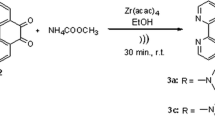Abstract
Reactive oxygen metabolites can transfer, via oxygenation, the chemiluminigenic probes luminol and lucigenin to an excited state and thus induce light emission from these probes. This technique has been applied to a study of the effect of common food antioxidants on the availability of reactive oxygen species in aqueous model systems and in microsomal preparations. In all systems tested, propyl gallate and its congener octyl gallate proved to be the most active scavengers of the oxygenating species involved in the chemiluminescence reaction. In aqueous model systems, butylated hydroxyanisole was 10 times less efficient than the gallic acid ester antioxidants. In biological material, the lower scavenger activity of butylated hydroxyanisole is further compromised by its ability to induce a marked increase in production of hydrogen peroxide in the endoplasmic reticulum. Butylated hydroxytoluene is only marginally active in aqueous media and in biological material. It is concluded that gallic acid ester antioxidants may possess a significant protective potential towards toxic and carcinogenic agents due to their ability to remove toxic oxygen metabolites.
Similar content being viewed by others
References
Allen RC (1982) Biochemiexcitation: Chemiluminescence and the study of biological oxygenation reactions in: Adam W, Cilento G (eds) Chemical and biological generation of excited states. Academic Press, New York, p 309
Aniansson H, Stendahl O, Dahlgren C (1984) Comparison between luminol and lucigenin-dependent chemiluminescence of polymorphonuclear leukocytes. Acta Pathol Microbiol Immunol Scand Sect C 29: 357–361
Bors W, Michel C, Saran M (1984) Inhibition of the bleaching of the carotinoid crocin. A rapid test for quantifying antioxidant activity. Biochem Biophys Acta 796: 312–319
Cummings SW, Prough RA (1983) Butylated hydroxyanisole-stimulated NADPH oxidase activity in rat liver microsomal fractions. J Biol Chem 258: 12315–12319
Freeman BA (1984) Biological sites and mechanisms of free radical production, in: Armstrong D. A., Sohal RS, Cutler RG, Slater TF (eds) Free radicals in molecular biology, aging, and disease. Raven Press, New York, p 13
Fukuzawa K, Gebicki JM (1983) Oxidation of α-tocopherol in micelles and liposomes by the hydroxyl, perhydroxyl, and superoxide free radicals. Arch Biochem 226: 242–251
Halliwell B, Gutteridge JMC (1984) Oxygen toxicity, oxygen radicals, transition metals and disease. Biochem J 219: 1–14
Hildebrandt AG, Roots I, Tjoe M, Heinemeyer G (1978) Hydrogen peroxide in hepatic microsomes, in: Fleischer S, Packer L (eds) Methods in enzymology, Vol LII. Academic Press, New York, p 342
Kahl R (1984) Synthetic antioxidants: Biochemical actions and interference with radiation, toxic compounds, chemical mutagens and chemical carcinogens. Toxicology 33: 185–218
Klein SM, Cohen G, Cederbaum AI (1981) Production of formaldehyde during metabolism of dimethyl sulfoxide by hydroxyl radical generating systems. Biochemistry 20: 6006–6012
Ozawa T, Hanaki A (1985) Spectroscopic studies on the reaction of superoxide ion with tocopherol model compound, 6-hydroxy-2, 2, 5, 7, 8-pentamenthylchroman. Biochem Biophys Res Commun 126: 873–878
Rössing D, Kahl R, Hildebrandt AG (1985) Effect of synthetic antioxidants on hydrogen peroxide formation, oxyferro cytochrome P-450 concentration and oxygen consumption in liver microsomes. Toxicology 34: 67–77
Sevanian A, Hochstein P (1985) Mechanisms and consequences of lipid peroxidation in biological systems. Ann Rev Nutr 5: 365–390
Simic MG, Hunter EPL (1983) Interaction of free radicals and antioxidants. In: Nygaard OF, Simic MG, Hauber JN (eds) Radioprotectors and anticarcinogens. Academic Press, New York, p 449
Tajima K, Sakamoto M, Okada K, Mukai K, Ishizu K, Sakurai H, Mori H (1983) Reaction of biological phenolic antioxidants with superoxide generated by cytochrome P-450 model system. Biochem Biophys Res Commun 115: 1002–1008
Tate RM, Repine JE (1984) Phagocytes, oxygen radicals and lung injury. In: Pryor WA (ed) Free radicals in biology, Vol VI. Academic Press, New York, p 199
Troll W, Wiesner R (1985) The role of oxygen radicals as a possible mechanism of tumor promotion. Ann Rev Pharmacol Toxicol 25: 509–528
Ullrich V, Kuthan H (1980) Autoxidation and uncoupling in microsomal monooxygenations. In: Gustafsson J, Carlstedt-Duke J, Mode A, Rafter T (eds) Biochemistry. Biophysics and regulation of cytochrome P-450. Elsevier, Amsterdam, p 267
Weimann A, Hildebrandt AG, Kahl R (1984) Different efficiency of various synthetic antioxidants towards NADPH induced chemiluminescence in rat liver microsomes. Biochem Biophys Res Commun 125: 1033–1038
Author information
Authors and Affiliations
Additional information
Dedicated to Professor Dr. med. Herbert Remmer on the occasion of his 65th birthday
Part of the doctoral theses of A. W. and S. W.
Rights and permissions
About this article
Cite this article
Kahl, R., Weimann, A., Weinke, S. et al. Detection of oxygen activation and determination of the activity of antioxidants towards reactive oxygen species by use of the chemiluminigenic probes luminol and lucigenin. Arch Toxicol 60, 158–162 (1987). https://doi.org/10.1007/BF00296971
Issue Date:
DOI: https://doi.org/10.1007/BF00296971



